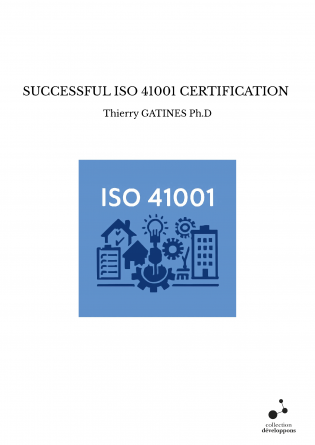ISO 39001 successful certification: the global standard for road safety management
In a world where road safety directly affects lives and business performance, the ISO 39001 standard has become the international benchmark for managing traffic-related risks.
It provides a structured approach for organisations seeking to reduce road accidents, improve driver safety, and optimise fleet management.
The book ISO 39001 Successful Certification serves as a comprehensive and practical guide, helping companies implement the standard and achieve certification step by step.
Why ISO 39001 is essential for road safety and responsible mobility
Every year, thousands of accidents are caused by human error, vehicle misuse, or organisational shortcomings.
To address these challenges, ISO 39001 defines a management framework that helps organisations systematically control road safety risks.
It promotes data-driven decision-making, continuous improvement, and preventive actions based on risk analysis.
Moreover, the standard supports compliance with local regulations and contributes to global efforts to reduce fatalities and injuries.
By adopting ISO 39001, companies can enhance safety culture, minimise costs, and protect employees and the public.
As a result, ISO 39001 Successful Certification becomes a strategic tool for transforming safety objectives into measurable results and long-term performance.
A step-by-step guide to achieving ISO 39001 certification
The book provides a clear and structured methodology for implementing the ISO 39001 standard.
It is designed for fleet managers, safety officers, and executives aiming to integrate road safety into their management systems.
The key stages include:
-
Understanding requirements: identify the standard’s clauses and interpret their practical implications.
-
Risk assessment: analyse accident causes, traffic conditions, and behavioural factors.
-
Vehicle management: ensure maintenance, compliance, and monitoring of the vehicle fleet.
-
Driver safety improvement: train employees, define safe-driving policies, and track performance.
-
Audit preparation: perform internal evaluations and document compliance before certification.
Thanks to this step-by-step approach, organisations can build a solid safety management system, align with ISO 39001 principles, and achieve certification successfully.
In addition, the guide encourages a culture of accountability, empowering teams to take ownership of road safety.
Practical tools and real-life examples for effective implementation
To make implementation more accessible, ISO 39001 Successful Certification includes a variety of practical resources.
These tools — such as checklists, risk matrices, policy templates, and performance dashboards — help structure each stage of the process.
Every chapter also features real-world case studies, illustrating how companies across logistics, public transport, and services have successfully applied ISO 39001.
Moreover, these examples provide insights into common challenges and proven strategies for improving results.
The book also includes self-assessment forms and KPIs to track performance and support continual improvement.
Thus, it serves as a hands-on operational manual, turning theoretical requirements into practical, actionable measures.
A strategic certification for safer, more efficient mobility
Achieving ISO 39001 certification demonstrates an organisation’s commitment to responsible mobility and continuous improvement.
It strengthens credibility with clients, employees, and regulatory authorities, showing that road safety is a core business priority.
Furthermore, certification helps reduce insurance costs, downtime, and accident-related losses.
It also fosters employee engagement, as staff members see tangible evidence of their organisation’s commitment to safety.
Therefore, ISO 39001 Successful Certification stands as a strategic guide, enabling businesses to align operational performance with social responsibility and public safety.
Fiches techniques

Normes ISO disponibles
par thierry.gatines | Août 11, 2025 | Fiches techniques

Audit ISO les erreurs à éviter
par thierry.gatines | Août 11, 2025 | Fiches techniques

Les étapes clés de la certification ISO
par thierry.gatines | Août 11, 2025 | Fiches techniques

